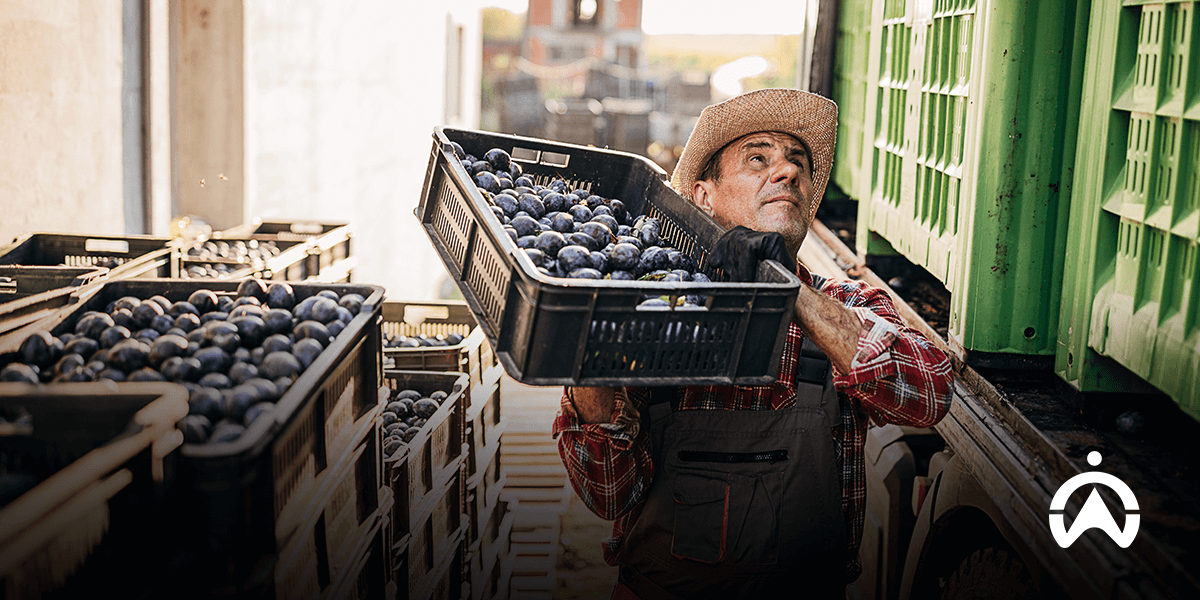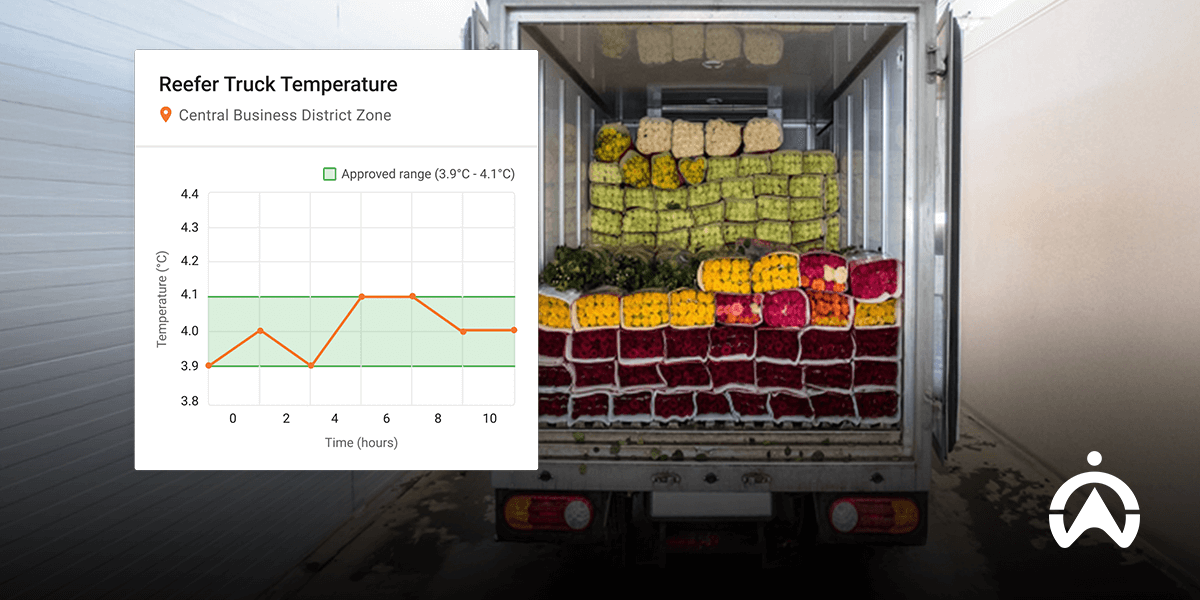The quality of perishable goods, such as fruits and dairy products, can spoil quickly without proper storage and transport. This makes them unsafe for use and will cost your transportation business a fortune due to a loss in customer trust and compliance fines.
Managing these goods effectively involves understanding their unique characteristics and implementing suitable storage and transportation practices. Businesses must guarantee safe storage and traceability during the transportation stage to prevent deterioration. To achieve this, there must be a fleet management solution that can monitor the temperature of these perishable goods in transit.
The combination of GPS technology, telematics, and temperature sensors makes this possible, and today, we discuss how it all works and why it's the best way to monitor your perishables.
A temperature sensor with a gps tracker is a device that's used to monitor temperature readings over a period of time. In cold chain logistics, it's used to record the temperature conditions of your cargo during transit. This is done through the integration of IoT (Internet of Things) technology, GPS tracking technology, and sensors.
The best way to track the temperature of goods during transit is by using a remote temperature monitor that works in conjunction with a GPS tracking system. This setup offers significant advantages compared to traditional methods, which rely heavily on manual procedures. Such methods are prone to human errors, such as using thermometers and temperature strips.
A GPS tracking system that's paired with temperature monitors offers real-time temperature alerts with high precision, which minimises variations. Some sensors are placed in different compartments of the storage unit, which allows multi-point monitoring.
They also give location insights and historical data analysis, which encourages accountability. Furthermore, fleet managers can easily access the data through user-friendly dashboards on desktops or mobile phones.

In December 2024, IOL News reported that South Africa has an alarming food waste crisis. It is estimated that nearly 16.7 million tonnes (approximately 16.7 billion kilograms) of food is wasted across the country every year.
Among the factors contributing to this is the food supply chain industry during the post-harvesting process. This is an alarming challenge, because 63% of South African households face food insecurity (according to the same article).
Perishable goods such as meat and vegetables have a limited shelf life and must reach retailers in the best quality possible. Storing such goods at incorrect temperatures is one of the most common food safety risks in the cold chain logistics industry, as it can result in bacteria forming, leading to spoilage and food poisoning.
The spoilage of these goods can bring your transportation business significant financial losses and can damage the company's reputation, potentially leading to product recalls and regulatory fines.
For example, in February 2024, Wazoogle Superfoods recalled some of their peanut butter products that were manufactured between May and December 2023. The products contained aflatoxin levels above safety limits set by the South African Health Organisation. Their investigation revealed that their contract manufacturer had issues whilst transporting the peanuts from the farms in Malawi to South Africa.
This real-life example highlights the dangers and implications of poor temperature monitoring during the transportation stage.
For most of this article, we’ve spoken about food, but there are other industries that also require temperature monitoring systems, such as the following:
Proper monitoring of perishable cargo involves a collaboration of various technologies, such as the following:
It all starts with the type of vehicle you get for the job. Vehicles that transport refrigerated goods have their own specifications. It's vital to pre-cool the storage compartments to the right conditions before loading the produce. That’s why pre-cooling trucks is a must for most businesses in this industry.
Sensor calibration refers to the process of adjusting and setting sensors to measure temperatures accurately. This is done through testing the accuracy of the sensors and adjusting them before placing them into vehicles. Over time, they can give inaccurate readings due to ageing, so they need to be regularly checked and adjusted. Also, make sure the sensors are placed in different zones of the cargo area to get the true conditions of the storage compartment.
Another key component in the transportation of perishable goods is planning and choosing routes that minimise travel time to avoid delays that may expose the cargo to risks. The best way to do this is to invest in route optimisation software.
Set up alerts for fleet managers, coordinators, dispatchers, and all relevant stakeholders so they receive notifications of any temperature changes or route deviations along the way.
Supermarket Farms supplies fresh, high-quality produce to restaurants, hotels and catering companies around Gauteng, South Africa. They’ve been in the industry for over 30 years.
They couldn't see where drivers were, so they needed a system that could give them complete visibility to ensure there were no unnecessary detours or delays. This would help them keep produce fresh and improve efficiency.
How we helped them:
"Cartrack's system has benefited our business’ productivity, helping with logistics, and improving driver turnaround times. It has helped us make sure there are no delays and route detours, saving us petrol because the drivers are staying on the exact routes” - Nelson Duarte, Co-owner, Supermarket Farms.

Have a look at the features we have in store for your business:
The integration of GPS technology, telematics, and temperature sensors proves to be an effective way for many businesses in the cold chain industry to monitor their refrigerated cargo. By investing in our preventative solutions, you ensure that all your goods remain in optimal condition from the pickup stage to the drop-off. Keep your cold chain unbroken; contact us today!
How can I monitor temperature remotely?
To monitor temperature remotely, you can use wireless temperature sensor technology that’s integrated with a fleet management platform like MiFleet from Cartrack. This allows you to connect to your fleet’s data from anywhere, whether using a mobile phone or a desktop.
How accurate are temperature sensors?
The accuracy of a temperature sensor depends on the type of sensor it is. Most fleet management services offer BLE (Bluetooth Low Energy) sensors, which are known to be highly accurate. However, like any other gadget, temperature sensors may wear out and lose accuracy over time if not properly maintained.
What device can detect temperature in a cargo truck?
Several devices can detect temperature in a cargo truck. The most common ones include:
Find out how GPS trackers and temperature sensors work together to give you the best method to monitor your temperature-sensitive cargo.